Published on Beliefnet, October 2000
Venerable Khandro Rinpoche is part of a new generation of Western-educated, English-speaking Tibetan teachers reared in exile. She is also a rarity in the male-dominated world of Tibetan Buddhism: a highly revered female teacher. Tibetans recognize Khandro Rinpoche, 33, as a manifestation of the female Buddha Tara.
The daughter of H.E. Mindrolling Rinpoche, a high lama in the Tibetan Nyingma tradition, she was identified at an early age as an incarnation of several renowned woman teachers from Tibetan history, including Yeshe Tsogyal, the consort of Padmasambhava, the saint credited with bringing Buddhism to Tibet, Machig Labdron, the female founder of the Chod (or ego-cutting) lineage, and the Great Khandro of Tsurphu, the consort of the 15th karmapa, who was a predecessor of the 17th Gyalwa Karmapa, the young lama who recently escaped Tibet.
As a girl, Khandro Rinpoche attended Christian convent schools in India, and her precise, British-accented English and ability to simplify complex Eastern concepts have won her a growing following in the West. She is currently on a six-city tour of the United States. Rinpoche (an honorific meaning "precious one" given to incarnate teachers) spoke with Indira and Lawrence Pintak during a stop in Boston.
One of the great debates in American Buddhism is over how the dharma will change as it comes to this country. Are you concerned?
If it is a Westernization of Buddhism as it was when Buddhism traveled from India into Tibet and then Tibetan Buddhism evolved, that's how it should be. It's good as long as one doesn't separate it from the core instructions of the Buddha and add new interpretations. But wherever there are people who try to change the original teachings to suit personal likes and dislikes, or when personal interpretations come in, then I don't agree with that. And a lot of times it does happen.
Are American Buddhists moving in the right direction?
People need to realize that we are at the very kindergarten level. The difference is going to come when people understand [they cannot] take dharma as just a change of clothes that you wear. People get a vague idea of what Buddhism is, read a few books, do a little meditation, and then run around wanting to establish dharma. And that's not how it's going to be. Dharma is going to be established when there are living people who embody it completely.
The guru is central to Tibetan Buddhism. Is the concept misunderstood here?
In the Western way of looking at it, a student is a student and the teacher is a teacher. Whereas the Buddhist way of looking at it is that the teacher is never the teacher alone, and the student is never the student alone. These two positions are not solid. You are a teacher when you need to be a teacher, you are a student when you need to be a student. It has to be that flexible. Our roles never should stagnate. Now if any tulku [incarnate lama] were to get stuck to the idea that "I am a tulku," that's the biggest egoistic display there is. You should never assume that because some title has been bestowed to you that you are so and so. It's beside the point.
How do you feel about the rise of American teachers of Buddhism?
When you take up the position of teacher, you don't have a life. From my point of view, it's impossible to have a life and do what you want to do and still be able to teach. As a teacher, you have to be the embodiment of that teaching, and if there's a reluctance, and you say "my life's my life," then you've immediately made it into two different identities. When that is understood, we can say it's now a place where there is living Buddhism, rather than talked Buddhism.
You have referred to the need for teachers to "rip out their hearts."
Yes, the expression is you rip out your heart, warm with blood dripping, and then give it to [the student], and this person sometimes takes it and really preserves it and feels the warmth of it. That's where the practice is being done.
You have frequently said that American practitioners are too often afraid; that we lack the confidence to let go of ego or to say, "I am ready for enlightenment." Is there something in our culture that makes us lack the confidence you speak of?
I think fear is ultimately the biggest obstacle that we all face. [In places] where Buddhism is more firmly planted, fear is easier to overcome. It is felt, but one is never too far from seeing it as part of one's illusion. Strength and devotion are both related to fearlessness. Being able to go beyond one's hesitation, to develop the courage to face the unknown, the unseen [is crucial to the practice]. People [here] think it's good to be confused, it's good to be afraid, it's good to be neurotic. Sometimes it's OK, but all the time? It's such a waste of time.
There seems to be an inherent conundrum in American Buddhism. My Tibetan friends tell me we are blessed with far greater access to senior teachers than ordinary Tibetans ever were, yet we have so many distractions here.
The minds of students in the West need more fearlessness, more relaxation. Not so worried, not so necessary to rush into things. Whereas in the East, we find that there's a certain easiness in the mind, a certain openness and relaxation, more settledness. But on the other hand, the East could use a little more hurrying, not so much relaxation. In that way, the East and the West could learn a little bit from one another.
You are one of the few recognized female tulkus. Is there a contradiction within Tibetan Buddhism when it comes to the role of women?
Ideally, there isn't [a contradiction]. Within the teachings I have never found any discrimination. [But in the] social structure? Yes, there are differences. The mindset of people in a patriarchal society is what you see around you. And so where children grow up seeing more men [in positions of power], there is definitely arrogance, there is definitely some sort of chauvinism. So within the Tibetan society, there are lots of people who still believe men are superior, women are inferior. We have terms that women have a lot of difficulty with, such as "the lower birth." But those are all conditional. Those are all society and human beings at work, and human beings at work discriminate about just about everything.
Today things are changing; more awareness is there, probably because there is a strong voice coming up. And that's very encouraging to see, because ultimately it will all come back to the women themselves. Where women do not encourage themselves to work hard, you really cannot blame anyone else. If you really think there's a situation that has to be changed, it's up to you, you have to do it.
Several Westerners have been recognized as incarnate lamas. Can we expect more?
As Buddhism is born in the West, of course tulkus will be born in the West. The important thing is not where and how many tulkus are born, but how does this tulku grow up as a genuine person? You sit on a throne and you have absolutely no idea about what suffering is. [That system] doesn't make sense at all. Each person should give that child an opportunity to understand what life is, what samsara [unenlightened life; the cycle of birth and death] is. And then if this child grows up into a genuine and sincere human being, then some good can happen out of it.
Many practitioners here are trying to integrate the teachings with family life. What is the Tibetan Buddhist view of parenthood?
Parents need to really practice dharma. To practice it sincerely, to embody the teachings--that's all that's needed. And then you can always be an example to [your children].


